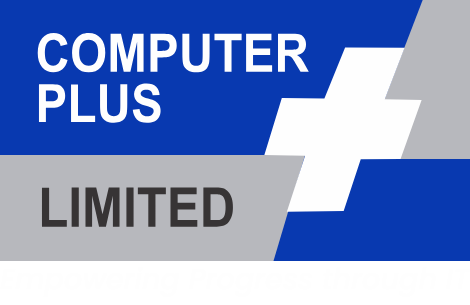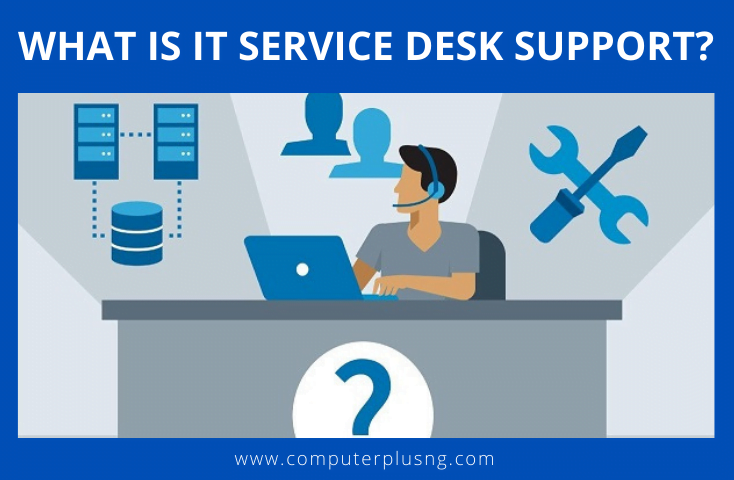IT Service desk support is the single point of contact (SPOC) between the service provider (IT) and users for everyday activities. A typical service desk software is capable of managing incidents and services besides handling user communications for things like outages and planned changes to services.
Key benefits & capabilities of the IT Service Desk
An IT service desk can help you;
Align IT and business processes/departments:
IT Service desk support facilitate communication and collaboration between IT and other departments, helping to resolve and even avoid preventable glitches and breakdowns by helping you create, assign, track, and resolve tickets.
Improve
asset management:
Service desks serve as a hub for all your organization’s hardware and software
assets, as well as any relevant contracts, enabling easy information retrieval,
asset valuation, configuration, maintenance, and more.
Enhance operational efficiency:
IT Service desk support standardize IT processes according to ITIL (best practices) guidelines, enabling better IT-related strategy planning and tracking.
Made
data-driven decisions:
Service desks collect and store the data from issues, products and performance
results, enabling easier analysis that informs smarter IT decisions.
The service desk is the primary point of contact between the organization and the technology it interacts with. It is the driving force enabling businesses to harness technological innovations to improve productivity and enable updated, usable, and safe 21st-century workflows.
Help desk vs. service desk – What’s the difference?
Make no mistake, though often used interchangeably, IT service desks and help desks are NOT one and the same. A service desk can often function as a help desk, but a help desk will never be a service desk.
The Difference between Help Desk and Service Desk?
Help desks Handle incoming support requests from end-users
End users turn to help desks in order to resolve issues they may experience with the organization’s product, service, or system. As such, help desk support staff are tasked with answering questions and providing on-site help to users experiencing a problem.
When necessary, they also escalate issues to a specialist or find alternative ways to resolve the incident.
Service desks aligns with technology to meet their organization’s needs
IT Service desk support take a broad approach to IT management, establishing, implementing and overseeing the organization’s (or multiple organizations’) technology strategies, addressing business technology needs within their own purview so that business processes run as smoothly and technologically soundly as possible.
Unlike a traditional help desk, the service desk’s reach extends beyond answering support questions to include the handling of a broad range of technology-related tasks, including:
- – Engaging in asset management – this is likely to include methods for asset discovery and the integration of a configuration management database (CMDB).
- – Ensuring compliance for SLAs – across all organizations within its scope.
- – Managing key ITSM tasks – including; change, configuration management and more to enable the continued advancement of technology uses within the organization.
- – Acting as the SPOC for all IT functions within an organization – this can include interaction with other organizational departments, as well as communications with end-users.
- – Managing an entry-level ticket management service – like a help desk.
Various IT service desk features;
The multi-purpose role IT service desks fulfill within any organization require a range of applications that expand beyond traditional tech support and management. As such, IT service desk software tends to include the following features:
- – Ticket Management; Enables the automatic prioritization, assignment, and monitoring incidents and issues, as raised through different channels, for faster resolution.
- – SLA Management; Helps prioritize tickets based on SLAs and determine whether escalation or deadlines should define management rules.
- – Task, problem, asset, release, contract, and change management; Organizes tasks and issues to promote collaboration, minimize disruptions, and ensure smooth transitions & product releases, while benefiting from 360-degree visibility of all your IT and business assets
- – Knowledge Base and Customer Service Portal; Creates a database of relevant information, FAQs and guides that promote self-service and self-help – and drive faster incident resolution. IT users with common queries and issues are directed to the knowledge base as the first course of action.
- – Service Catalog; A centralized location that details to different business units the service available. The catalog also provides a form where users can submit a ticket.
- – Dashboards; Allows for comprehensive visibility of real-time and past data to help with performance, productivity, effectiveness, and other process optimization.
- – Automation; Ensures routine tasks are always performed to completion, freeing up support staff to engage in unique and challenging tasks.
- – Analytics; Collects and studies all relevant data to generate actionable insights that can improve service desk performance and results.
Advantages of IT service desk Support;
Any organization that uses technology in one capacity or another will find itself needing – and using an IT service desk, though their exact needs from said service desk will vary according to what it is their technology is meant to do. Here are a few main use cases:
Saving
money on technology
The service desk can help organizations save money on technology by directing
IT budgets to exactly the areas they’re needed most.
Timely
responsiveness to downtime
A good service desk solution collects historical data on the organization’s
technology and processes, enabling the identification, early warning against,
and prevention of, potential glitches and malfunctions, reducing downtime
significantly.
Change
management across organizations
Service desks can be used to schedule change processes, assign transitional
tasks, and automate notifications so that IT users know what to do and when.
Basic
response to incidents
Beyond providing a channel for more efficient incident management, service
desks also open the doors to self-service, via a knowledge base, driving
resolution up.
CONCLUSION;
Implementing the right IT service desk software can make all the difference between a service desk that successfully serves – and one that doesn’t. To best position your organization’s service desk for success, you’ll need a software solution capable of handling your demanding environment’s daily workload.
The broad scope required of the modern IT service desk positions it as a principal element in any organization’s technology strategy.
The central point of contact for technology use throughout the business, service desks are needed and used by just about any organization interacting with technology as part of its operational processes.
As such, selecting the right software will enable your service desk to handle all service desk tasks with greater speed, ease and satisfaction.
Would you like to learn more about Computer Plus Limited and how we can support your IT infrastructure? Contact us here for any inquiries you may have. We look forward to hearing from you!
You can also send direct email to : info@computerplusng.com

